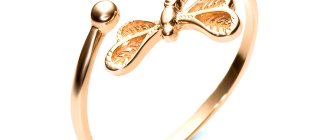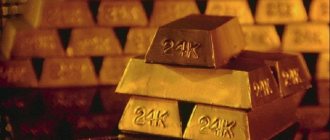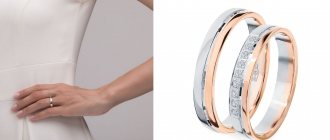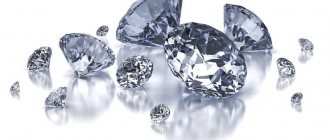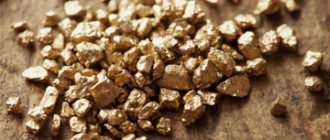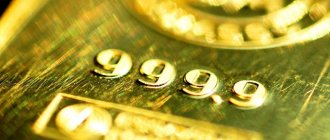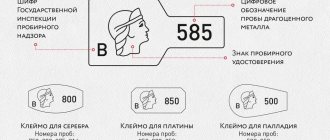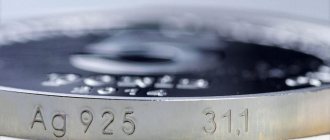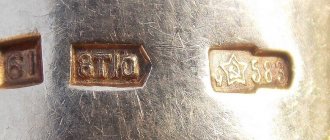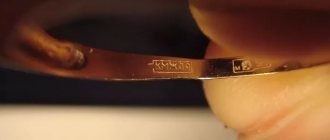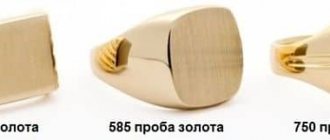Gold always remains at the peak of popularity and has a fairly high cost. When purchasing gold jewelry, every buyer always pays attention to the sample. However, as a result of inheritance or receiving a gift, you can become the owner of gold without purity. To have a real opportunity to obtain the most accurate expert assessment of precious material, it is worth using the services of professional companies. Among reliable business partners, many clients highlight the antique store Golden Council.
Why try?
One of the most common is the well-known 585th standard, indicating that the product contains 58.5% pure gold. When buying a precious trinket, the first attention is paid to its presence. But there is a situation when gold is still found without assay.
Few people know that the testing system did not always exist. It began to be used only after the issuance of a decree of Peter I, which obliged jewelers to apply a sample to products to confirm authenticity and to protect against fraud.
The spool system existed until 1927, and then it was replaced by a metric one.
Sales of unbranded jewelry
Jewelry made of gold without hallmarks looks suspicious—it’s unlikely to sell something without a brand at the first sale you come across. Where is the guarantee that individual links, entire sections are not gold, but another metal coated with gold? How to sell such a product, especially if you yourself are not sure of its authenticity?
- Sale by advertisement. You set the price yourself. In any case, you will get more in your hands than if you tried to rent or pawn.
- Pawnshop. In the best case, you can claim an amount comparable to the cost of the official exchange rate for a gram of gold - this is several times less than the actual cost of the product delivered.
- Selling to street gypsies (and who will fool whom more!).
I would try to put a brand on it, then there would be no reason to get involved in dubious fraud.
Why is it missing?
Markings on gold jewelry are not always present. The absence is due to various reasons.
- In cases where a chain, bracelet or ring without hallmarking is a family heirloom, has been inherited and belongs to a time when hallmarking of jewelry did not exist.
- If the jewelry is made privately to order.
- After restoration, a fragment remains, a small piece, since the master tries to leave a sample on the product itself, and also if the earring lock, chain was repaired, or the ring size was changed.
- Another reason why there is no hallmark on a gold ring is re-melting.
- The purchase of jewelry was carried out abroad. But in such cases there must be a mark on it.
- When gold is used for medical purposes (dental crowns), it is not assayed. It is of high quality and durable, it is difficult to deform.
In all cases where the precious item was without hallmark, it will be valued as scrap gold, but if the appearance is quite good, the merchandiser can evaluate it at his discretion.
What determines the price of unassayed gold?
The price of gold without hallmark depends solely on the results of the examination. A free examination is advantageous offer for a client who has the opportunity to:
- Get professional expert assessment.
- Sell unassembled gold at its real value. The store’s specialists monitor the jewelry market daily, which allows them to offer a price for the product, taking into account the expert’s opinion.
- Save your own time and get objective information about your item. At the same time, the examination does not oblige the client to further cooperation.
How to determine?
The expert checks carefully before setting the price for the jewelry with or without markings. The presence of a quality mark does not mean anything, because it can be seen not only on real gold, but also on fake gold. Work to verify the authenticity of precious metal is carried out only if the owner has given permission to carry out it.
The main ways to determine the sample of a precious metal in a pawnshop are:
- File.
- Special acid reagents.
- Assay needles or touchstones are the oldest method of testing yellow metal.
Several ways to determine the authenticity of jewelry at home.
- Application of a magnet. If the precious metal content is negligible or absent, the product will stick to the magnet.
- Check with vinegar and iodine. They have no effect on gold and the color of the jewelry does not change.
- Draw a lapis pencil over the wet decoration. If it is not fake, there will be no traces of it after the pencil dries.
- You can also place the product in black bread (fresh) for two days. When it becomes stale, break it and look at the precious metal. If the metal is genuine, there should be no oxidation processes or mold on it.
- Another way to determine authenticity is smell. Metals have a smell, gold does not.
Even after checking in these ways, it would be best to contact an experienced jeweler. After such testing, the ring or other jewelry will have a guarantee of authenticity.
How does a merchandiser determine the sample?
Any piece of jewelry, with or without hallmarks, is carefully checked by a merchandiser at a pawnshop before naming the collateral value. If a piece of jewelry does not have marks indicating the sample of the precious metal, or the correspondence of the jewelry to the specified sample is in doubt by the merchandiser, he has the right to conduct an inspection using a needle file and special acid reagents.
Checking the authenticity of the metal is carried out only with the permission of the owner. The undercut is done very carefully so as not to damage the decoration or leave marks. This is a necessary measure, especially if the product is without a stamp or hallmark. Only after the examination, the pawnshop appraiser names the value.
Please note: some pawnshops quote the price an order of magnitude lower if the jewelry is not hallmarked. SSUDI.RU is not one of these pawnshops. We always meet our customers halfway and pay the full amount for unsampled gold and silver products. The only exception is platinum - items made from this metal must have a hallmark or stamp of Russian or foreign standard.
Where to put it?
Owners of precious trinkets, without testing, are wondering where to put it. Testing is done if the product is made to order by a private craftsman. An unassayed gold ring, chain, earrings and other trinkets can be assayed at the Assay Office after melting down. Mostly legal entities send products there, but individuals can also contact this authority.
Some conditions for carrying out this process.
- The services of the State Assay Office for individuals are only possible to re-mark a piece of jewelry.
- The provision of foreign-made jewelry is possible only in quantities of no more than three items (or one set).
- An application to the Assay Office is submitted only on one designated day per month and only at the specified time.
- The sample installation process lasts a month.
- The cost of the service is not cheap.
The final decision on testing is made by the owner of the product. The presence of markings does not always increase the price of jewelry.
What products can be sold without testing?
It is fashionable to sell precious stones and diamonds by conducting free analysis. The company's specialists have extensive professional experience. The company's laboratories are equipped with modern and high-precision equipment.
Each owner of jewelry can imagine:
- Ingots and precious stones.
- Jewelry of any size and in any condition.
- Jewelry household items, candlesticks, cigarette cases.
- Figurines, figurines.
About product samples
Everyone loves jewelry made from precious metals. Due to their affordable price and brilliance, gold products are in demand and popular. Apart from acids, this precious metal is not affected by any other substances existing in nature. It also has a high density. Due to this, many women prefer wedding rings made of this precious metal, since they can be left on the finger while doing household chores.
Jewelry factories do not make jewelry from pure gold, since this metal is soft and difficult to give the required shape.
To achieve the result and obtain jewelry of the required quality, gold alloys are used, which are called “gold hallmarks”. They are used in jewelry, industry, dentistry, and banking.
Where is the sample indicated?
The appraiser will use a magnifying glass to inspect the surrendered jewelry in search of the mark:
- inner surface of the ring;
- lock wire or earring pin;
- a link (sometimes a plate) connecting a clasp to a bracelet or chain.
On large jewelry such as brooches, buckles, and cutlery, select a place for testing on the reverse side.
How to determine gold purity
All home-grown methods will not give the correct result. If you have to regularly buy and sell gold, buy an electronic device or a touchstone with reagents - they are unlikely to rent it to you.
For a one-time case (you bought a gold necklace in Egypt and are unsure whether it is fake), I recommend contacting the state assay laboratory.
How does a specialist determine a sample?
The pawnshop merchandiser has a real physical and chemical mini-laboratory at his disposal.
- Drip method using chemical reagents. The surface of the donated item is scratched with a file. This is necessary to get to the deeper layer. After all, gold plating is possible, and underneath it is an alloy of copper and silver, for example. Then a reagent is dripped onto the damaged area (a solution of gold chloride for 583, for the rest - an acid reagent).
Gold itself is inert; other metals in the product react. After 15–20 seconds. The reagent is removed and the changed color is compared with the reference table.
If the returned product is 585 standard, the color will turn light brown. The damage will turn green in the case of the 375th sample. The brightness of the color is also taken into account: the darker the color, the less precious metal in the alloy.
- Determination using a touchstone and a needle (also called the “dash test”). First, they use a file (it looks like a tiny file, a file) to damage the product, which they want to take to a pawnshop, in order to exclude a fake - checking for authenticity. Then, using this section, a line is drawn along the touchstone - a polished black beam of fine-grained slate. A second line is drawn next to it with an assay needle (sample standard) and the resulting color is compared.
- Determination using a touchstone (also called “Lydian stone”, “touchstone”) and a reagent. After drawing the line, as in step 2, nitric acid is dripped onto it. The percentage composition is determined by the changed color.
- Determination using an electronic detector. Determines the thickness of the applied coating and the specific gravity of the delivered item in 5 seconds. Works in the range of 333-750 or 6-18 carats.
The most accurate value will be given by the state assay laboratory, where individuals can submit jewelry to have the sample checked. This will no longer be an express test, but a full-fledged analysis using fire - a muffle method with integrity damage.
Gold assay table
In 1870, at the invitation of the French government, representatives of 24 states at a meeting of the International Meter Commission agreed to switch to the metric system. The Russian Empire then received its standard meter and kilogram. From that moment on, the transition to the metric system began, due to the need for a single standard.
Later, in the jewelry business of the Soviet Union, they moved away from their own spool system to the metric system, and the owners of the Western jewelry business were left with carats.
“Skinny question”: standardization implies the need to “hand over” professional secrets (alloy composition, manufacturing technology), which entails a decrease in the profits of well-known jewelry houses.
It is believed that the maximum possible amount of gold without impurities in the karat system is 24 parts. For the numbers we are used to, we need to divide the carats by 24 and multiply by 1000. I will translate the 14 carat chain into “our language” - 14/24*1000 = 583.33, which approximately corresponds to our 585th sample (see table).
Conclusion: if we compare 14-karat gold and our 585-carat gold, domestic gold is much higher quality. I will explain:
- the mass fraction of precious metal in the alloy is greater;
- the alloy itself is characterized by greater wear resistance (GOST R 51152-98).
Fact: Jewelers refuse to work if fragile “disposable” 14-karat gold brought from abroad is repaired.
| Metric standard | Carats | Specific gravity of gold in the alloy according to GOST, % |
| 333 (according to the standards of Russia, Ukraine, Kazakhstan, Belarus, they are not classified as gold - jewelry consisting of one third of gold is classified as such only by Western standards) | 8 | 33,3 |
| 375 | 9 | 37,5 |
| 500 | 12 | 50 |
| 583 (popular in the USSR, not used in the Russian Federation after the collapse of the Union) | 14 | 58,3 |
| 585 | 14 | 58,5 |
| 750 | 18 | 75 |
| 958 | 23 | 95,8 |
| 999 | 24 | 99,9 |
For investment gold bars, a purity of 999.9 is used. Foreign ones were also cast from an alloy of 990, 995, 996, 998 and 999 samples. A similar ratio of gold and ligature in the alloy is still used today in the manufacture of gold coins (an ancient coin with the mark 916 and 917 can be found).
Technical gold, where it cannot be avoided, is used in very pure form: its fineness is 998–999. This became possible thanks to refining. Before this, devices and equipment used an alloy with a specific gravity of precious metal of 96–99%. But it’s better not to bring fees into the buying process - you’ll get more for the whole TV you buy.
Modern medals and awards are just an imitation: a brass (most often) blank is coated with 9 carat gold (375). Military awards of the First and Second World Wars and the Patriotic War were made of 750 gold. The “Gold Star” of the Hero of the Soviet Union consists of 95% precious metal.
In dentistry, 900-carat gold is used; the alloy contains 4% silver and 6% copper for strength and sterility. Until the middle of the 20th century. the crowns were made of gold with a purity of 916 (917). Taking your teeth to a pawnshop is exactly what it sounds like!.. Gold leaf (sheets 0.002 mm thick) corresponds to 23 carats. “Russian Standard” is made from an alloy with 95.8–96% gold.
The gold standard is indicated on foreign-made products. With us - only for the base metal.
For example, on a chain made in the Russian Federation made of silver, plated with gold, there will be a silver mark.
A foreign manufacturer can supply 14KHGE or 14KTHGE (if 14 karat precious metal is used). Take this point into account so that when you hand over the “golden” accessory, you won’t be surprised at the ridiculous amount.
The most common standard of 14 K (domestic 585th) is used in jewelry and ritual decorations. The color of the alloy ranges from yellow-green to red.
Is it possible to sell?
The price of the yellow metal is constantly increasing, so buying it for resale or recycling has become a popular phenomenon. But some products are without quality marks. Jewelry without markings can be sold. To do this, you need to go to a pawnshop. It will set the price of the product, but it will be significantly lower, because such institutions purchase gold as scrap precious metal.
If there are gold items with unclearly visible numbers (if the item is old, they may have been partially erased), melted down or made by private jewelers, if necessary, they can be pledged or purchased as a product or precious metal. There is no need to worry about whether the pawnshop will accept gold without hallmarks. The answer is clear - he will accept it, but at a reduced cost.
The pawnshop has no right to continue selling jewelry without the markings. For assaying before sale, all goods must be submitted to the Assay Office for installation of quality marks on them.
Why is there no mark on gold?
It happens that the sample is missing:
- the product was restored, remade;
- this is an unstamped semi-finished product (you need to contact the Assay Supervision Inspectorate yourself);
- made by a “black” jeweler (he could even put his own mark);
- purchased at the bazaar of Turkey, Egypt and other countries loved by tourists (where the seller, if the client wishes, can “stamp” any number).
It’s another quest, in fact, to hand over a thing without a brand.
Can the lack of sample affect the cost?
Some pawnshops accept gold jewelry without hallmarks, but practice gradation of prices. Those who hand over the product without testing will receive a significantly smaller amount - down to the cost of scrap.
The purchase insures one's own business: if the collateral is not redeemed, another client who looks into the pawnshop will leave with nothing - who needs dubious gold? And the jewelry company buys up the abandoned metal at dumping prices. It won't take long to go bankrupt.
Assessment and admission stages
Buying jewelry offered by the company takes a few minutes of the working day.
How to sell gold:
- Go to the purchasing company's website. In a special form, indicate the parameters of the jewelry, filling out as many fields as possible. It is advisable to add a photo of the decoration. Leave your contact information so that a company employee can contact the potential seller.
- After studying the data on the subject of the transaction, an employee of the buying company contacts the client and announces the calculated price. If the owner of the jewelry agrees with it, he needs to take the jewelry to the delivery point.
- At the point of delivery, the expert re-evaluates the item. If you are handing over jewelry with a stone, a specialist will determine the authenticity, degree of transparency, shade saturation, and carat weight on the spot. A gem that is considered to be of low value will certainly be returned to the owner. A genuine gemstone in an antique or branded item will be taken into account when calculating the transaction amount. If there is no intention to sell a noble gem, the appraiser will take it out of the frame to give it to the owner, and will only accept the frame (gold scrap).
- The transaction is documented. Both parties sign an agreement that sets out the amount of purchase of the product by the company.
- After the conclusion of the contract, the seller receives the proceeds. Payment in cash or by transfer to a bank card - the payment method is chosen by the client.
What are the advantages of buying unassayed gold from a professional store?
The antique store Zolotoy Sovet differs from pawn shops in buying gold without hallmarks. An important advantage is simple service and official conduct of business. Among the advantages are:
- Prompt resolution of the issue.
- Maximum information content for the client online.
- A qualified approach to expert assessment of any product.
- Favorable price offers.
- Payment in cash and non-cash.
- Warranty and privacy policy.
Golden Advice is an individual approach, with the maximum level of benefit for the client!
Pros of the company
If you intend to sell jewelry profitably, you need to choose a reliable buying company that works on transparent terms.
Contact us to receive the following benefits:
- a wide range of accepted assets, including antique jewelry, luxury and designer jewelry;
- flexible conditions for checking and accepting jewelry with stones, including diamonds;
- can hand over both full-fledged jewelry and scrap;
- accurate assessment, including online: experts have extensive experience, so they accurately determine the value of gold rings, rings, chains, bracelets, earrings, cufflinks, and jewelry watches.
- favorable price for the seller;
- prompt conclusion of the transaction - money is issued on the day of application;
We work exclusively within the legal framework, being a bona fide buyer.
